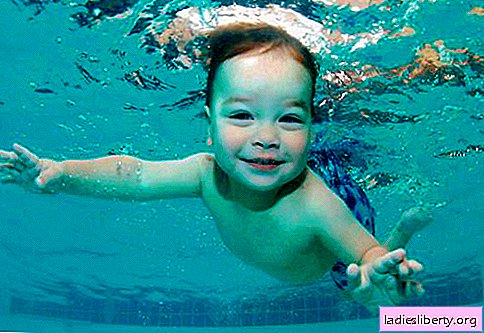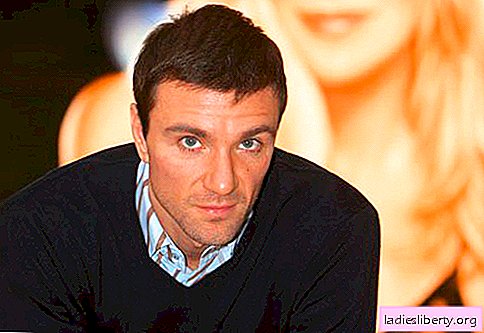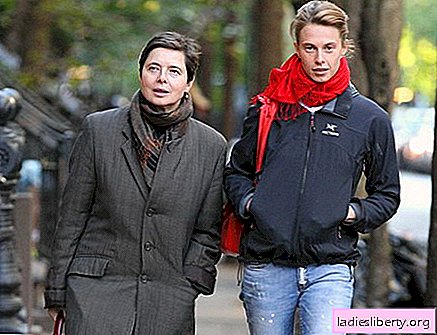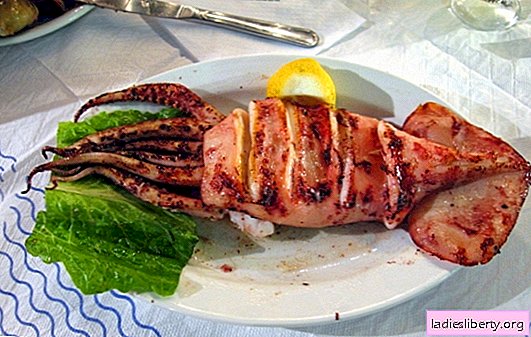
A runny nose in a baby is a common phenomenon and a serious problem, given that a child with a stuffy nose can not fully sleep, eat and breathe. This can lead to further general deterioration of health.
With a runny nose in an infant, treatment depends on its causes. In addition, at this age (and infants, or infants, are considered children under 1 year of age who are breast-fed or receiving most of the diet in the form of breast milk; newborns are children of the first month of life) not all medicines can be used for use The child has.
At the same time, given the unstable and undeveloped immunity, inaction can lead to serious complications. Therefore, before using drops or some alternative methods of treatment, you need to know exactly what to treat.
Physiological runny nose
For children under 2.5 - 3 months, a runny nose is a physiological state: up to this age, natural processes of the body's adaptation to existence in a new environment occur for him. This is also due to the anatomical features of the structure of the upper respiratory tract in children. Their mucous membrane is fully formed only by 10 weeks after birth.
With physiological rhinitis in infants, treatment is not required - it is necessary to create comfortable conditions for the child: sufficiently moist and warm clean air in the children's room.
Predisposing factors
The structure of the nasopharynx and sinuses in infants and adults is significantly different. Inhaled air is exposed to:
• purification;
• heating;
• moisturizing.
In infants, unlike adults, there are only 2 nasal passages: upper and middle. The lower one is absent; its development is completed by 4 years. The missing nasal passage and the narrow lumen of the existing ones lead to the fact that the inhaled air is partially cleaned, moistened and heated - a runny nose (rhinitis) occurs.
Causes of the common cold in the baby
In addition to the physiological rhinitis in infants, there are several other causes of rhinitis. Having clarified the etiological factor of the common cold in infants, treatment is prescribed taking into account the identified cause and condition of the child.
1. Viruses is the most common cause of an infectious rhinitis in a child of any age. Usually, a pediatrician is diagnosed with SARS and a viral infection is treated, including a runny nose, as its manifestation.
2. Bacteria - most often it is conditionally pathogenic:
• staphylococci;
• streptococci, etc.
Bacteria, due to low immunity and some external factors, begin to multiply actively on the nasopharyngeal mucosa and provoke the development of a viral - bacterial infection, which in addition to the common cold has other clinical manifestations.
3. Hypothermia leads to a violation of the thermoregulation of blood vessels in the nasopharynx. There is a violation of blood circulation in the mucous membrane of the nasopharynx due to vasospasm under prolonged exposure to cold, which causes vasomotor rhinitis.
4. Allergies - the baby may develop an allergic reaction to the effects of any adverse environmental factor both on the street and at home: dust, baby formula, household chemicals (powders that wash baby clothes), exhaust basics when walking on the street, etc. In connection with undeveloped immunity, allergic rhinitis (runny nose) develops.
5. Injury - any traumatic damage (bruising, scratching, squeezing, unsuitable drops in the nose, for example, alcohol-containing ones) can lead to a runny nose.
6. Unfavorable microclimate - insufficiently humidified air leads to overdrying of the mucous membrane and is more susceptible to pathogens (viruses or bacteria).
7. Foreign body, which can fall into the narrow nasal passage of the child, causes an inflammatory process in the mucosa and lead to the discharge of purulent discharge from one nasal passage.
It must be remembered that in children under one year old, due to the structural features of the sinuses, sinusitis does not occur. Therefore, even the presence of abundant purulent discharge does not mean that the child has sinusitis, for example.
The causes of the common cold in infants also include:
• teething;
• neurovegetative disorders.
General clinical manifestations
Due to the prolonged presence of the baby on the back, the contents of the nasal sinuses and the developed inflammatory process quickly pass to the lower sections and ears.
The content stagnates, does not allow normal eating and breathing.
The child becomes tearful, excitable.
Against this background, temperature may rise.
Due to the impossibility of breathing through the nose, the baby refuses to breast, does not sleep.
Symptoms of a physiological rhinitis
Physiological runny nose in children up to a year is manifested by excessive moistening of the nasal mucosa and the passage of a transparent mucous discharge.
The main signs of a pathological condition of a child with a cold are:
• difficulty in nasal breathing;
• copious nasal discharge - rhinorrhea;
• sneezing;
• moodiness;
• lethargy;
• refusal of food;
• bad sleep.
Clinical symptoms of other types of rhinitis
A runny nose of an infectious nature is accompanied by an increase in temperature, cough, shortness of breath is possible.
With allergic rhinitis, in addition to the listed, the following symptoms are observed:
• redness of the eyes;
• lacrimation;
• itching around the nose and eyes;
• pasty face (slight swelling).
With vasomotor rhinitis, which is relatively rare, one-sided nasal congestion is observed. When the body position changes, it appears on the other side.
In case of traumatic rhinitis or foreign body ingestion, the process is basically also one-sided. There is a discharge of purulent discharge from one nasal passage (into which a foreign object fell).
Indications for calling a pediatrician
Even with such a seemingly not very dangerous condition as a runny nose in an infant, treatment on its own, without consulting a pediatrician, is not recommended. To avoid unpleasant consequences and complications, it is necessary to consult a doctor as soon as possible. Situations may arise when a doctor should prescribe treatment for a runny nose in an infant. This happens when:
• high temperature;
• duration of rhinitis more than 10 days;
• the presence of streaks of blood in the discharge from the nose;
• constant crying of the child, poor sleep, refusal to eat with weight loss;
• the appearance of thick purulent viscous discharge from the nose of a greenish-yellow color;
• wheezing, shortness of breath, coughing;
• hypothermia.
These signs indicate a complication or attachment of the infection and require careful examination by a doctor to clarify the diagnosis and treatment.
Runny nose in infants - treatment and preventive measures
With a physiological rhinitis in an infant, drug treatment is not required. It is necessary to create comfortable conditions for free breathing of the child. First of all, it is a sufficient air humidity (not less than 60%). Under such conditions, drying out of the mucosa is excluded. In a child up to a year, the mucous membranes are very thin and when he is in a room with dry air, moisture release increases - rhinorrhea appears. The following measures can be taken to prevent this:
• place water containers in the children's room;
• use a humidifier;
• instill saline solution several times a day (pharmacy or prepared independently: for 1 liter of water - one teaspoon of sea or table salt);
• use moisturizing pharmacy drops based on sea water instead of saline (Aqua Maris, Aqualor Baby, Salin, etc.).
These moisturizing measures are used for the common cold of any etiology (bacterial, viral, mixed).
In addition, with copious nasal discharge:
• their aspiration using a special device - a nasal aspirator;
• mechanical cleaning of the mucous membrane and removal of the formed crusts using turunda from cotton;
• rinse the nose with a pipette so as not to injure the mucous membrane and cause otitis media by the entry of fluid under high pressure into the middle ear.
Improper use of the aspirator may result in infection. Therefore, the procedure should be carried out with maximum caution, in cases of severe difficulty breathing and the inefficiency of other measures.
Drug treatment
With a runny nose in a baby, treatment with special vasoconstrictor drops should be prescribed by a pediatrician to avoid overdose and possible side effects and complications. Despite the fact that such drops are over-the-counter dosage forms in our country (Nazivin, Otrivin Baby, Vibracil, Farmazolin etc.), these drugs include sympatho - and alpha - adrenomimetics, which can cause serious side effects. Therefore, their use must be agreed with the doctor, given the different concentration of ready-made medicinal solutions: for example, with a runny nose in infants nazivin treatment allows the use of a 0.01% solution of 1 drop in each nasal passage 2 to 3 times a day for no more than 5 days. And for children after 6 years, a 0.05% solution is used - that is, in a concentration exceeding 5 times Nazivin for infants. Overdosing can cause poisoning: the child becomes lethargic, weak, there is a sharp drowsiness and tachycardia (heart palpitations), in addition - the opposite reaction to the use of drops in the form of increased nasal congestion.
In the case of infection and the appearance of purulent discharge in the common cold in infants, treatment includes the use of drugs that act on microbial agents. These include Protargol or Collargol, which contain silver ions and allow you to avoid antibiotics with their many side effects.
Drops containing vegetable essential oils (Pinosol)including many components (eucalyptus, colanchoe juice, fir etc.) are highly allergenic and are contraindicated for the treatment of the common cold in infants and in children under 3 years of age. And at an older age, it is necessary to apply with great caution, but it is better to abandon them.
It must be remembered that only a pediatrician should prescribe any drops in the nose. Self-treatment of the common cold in the baby, as well as the use of various methods of traditional medicine is strictly contraindicated. To maintain the health of the child, a timely visit to the doctor is necessary.











